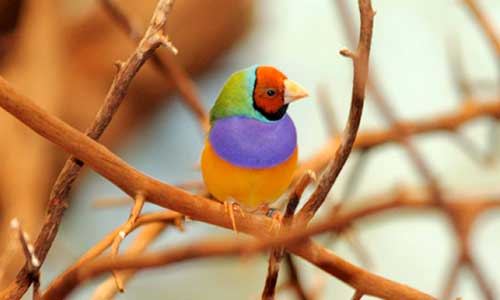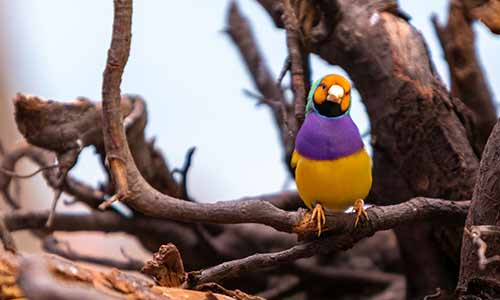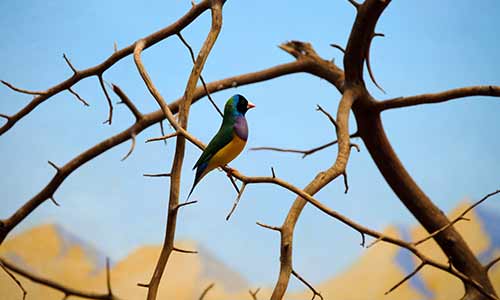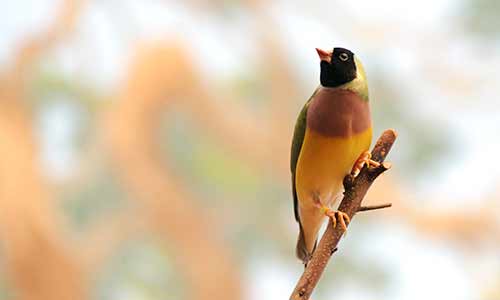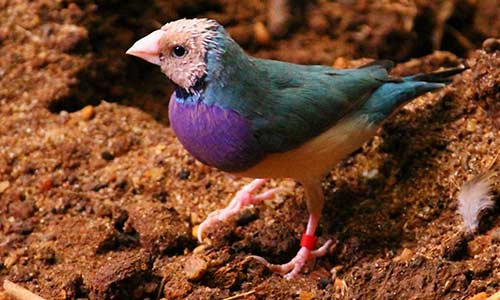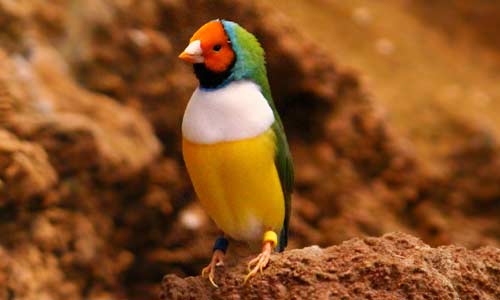Gouldian Finch
Chloebia gouldiae
About the Gouldian Finch
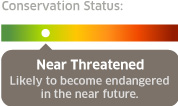
Geographic Range:

Class: Aves
Order: Passeriformes
Family: Estrildidae
Genus: Chloebia
Species: gouldiae
Gouldian finches are also called rainbow finches because of their bright and colorful feathers. Their necks are a light green, their backs and wings are a blueish color, and the sides of their bodies and abdomens are yellow. Three distinct color variations exist, with individuals having either a red, black, or yellow head. Males have bright purple breast feathers, but females are a lighter, pale purple.
Gouldian Finch Facts
Appearance:
Gouldian finches are small, vividly-colored birds. Adults weigh 14-15 grams. Their necks are a light green, their backs and wings are a blueish color, and the sides of their bodies and abdomens are yellow. Three distinct color variations exist, with individuals having either a red, black, or yellow head. Males have bright purple breast feathers, but females are a lighter, pale purple. Both males and females have a turquoise-colored band around their head.
Diet:
Seeds, particularly grass seeds.
Reproduction:
Males court females by bobbing their heads and ruffling their feathers to show off their colors to females. After mating, a female will lay four to eight eggs. Both parents help incubate the eggs and raise the chicks once they’ve hatched. Chicks hatch without any feathers, but start growing them around 12 days of age.
Behavior:
Gouldian finches are generally not as noisy as some other species of finches. They communicate via trills, chirps, hisses and clicking sounds. They forage for seeds on the ground, but lay their eggs in tree holes.
Habitat/Range:
Found in the savannah and woodlands of Northern Australia.
Median Life Expectancy:
5 years
You Can Find This Animal in the Bird's World
You Can Help!
Gouldian finches are threatened by fires and habitat destruction. Wildfires decrease the amount of seed finches have for food and the availability of tree hollows for nesting. You can help prevent human-triggered wildfires by:
- only setting fires in appropriate fire pits
- making sure all fires are completely out after use
- not starting fires on windy days
- and many other simple safety procedures
You May Also Like
At Franklin Park Zoo:
At Stone Zoo:

